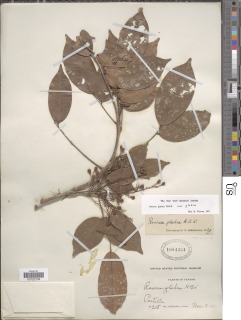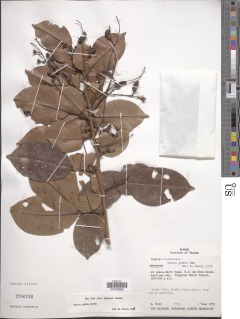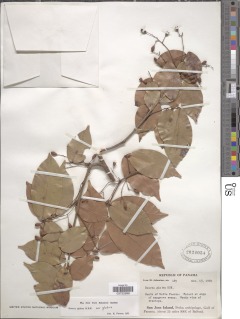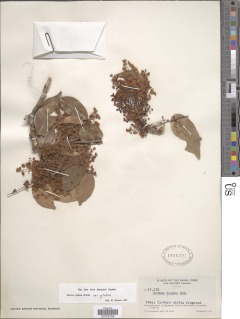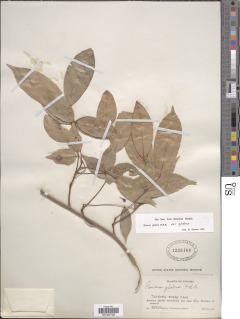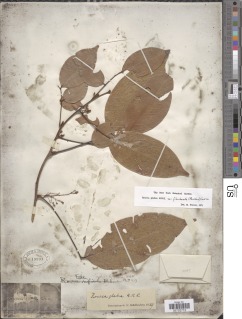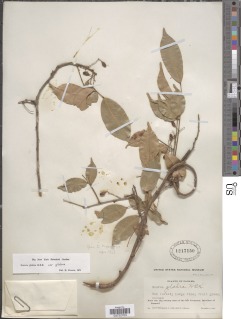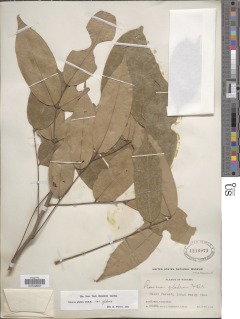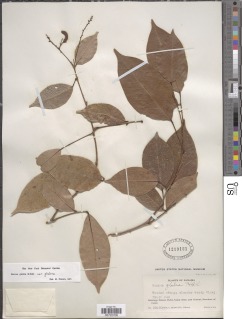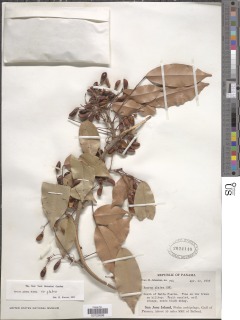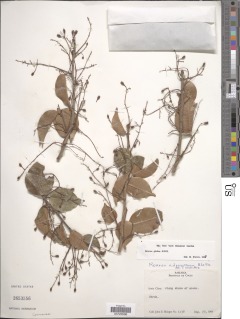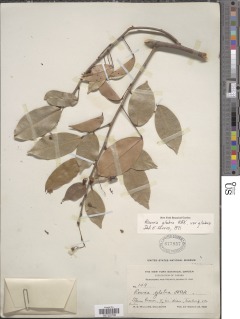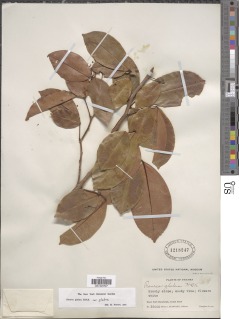

|
|
|
|
Family: Connaraceae
|
Descripción: Plantas trepadoras o lianas con tronco marrón. Ramitas de color marrón y lenticeladas. Hojas imparipinnadas y alternas, con 3-9 folíolos, alternos o subopuestos en el raquis. Los folíolos de 4-10 x 2-4 cm, oblongos o elípticos, con ápice agudo o acuminado, bordes enteros y base redondeada. Los folíolos son glabros y con nervadura reticulada. Pecíolo de 2-6 cm de largo y con un pulvínulo cilíndrico en la base. Pecíolulos pulvinados. Inflorescencias en panículas supra axilares. Flores blancas y aromáticas. Frutos en folículos, de 1-1.5 cm de largo, verdes y ligeramente arqueados y con los restos del cáliz en la base, tornándose rojos o anaranjados al madurar. Semilla 1, negra y envuelta de un arilo amarillo. Especies Parecidas: A menudo se confunde con LK rourad Rourea adenophora LK2 , pero en R. adenophora los folíolos se encuentran cubiertos de pelos. Usos: Las semillas son venenosas, mezcladas con maíz y arroz se utilizan para matar animales como las ratas y las zarigüeyas. Mata negro Liana. Leaves imparipinnate; petioles 2-6 cm long, terete with swollen basal pulvinus; petiolules pulvinate, 2-4 mm long; leaflets 3-7 (9), alternate or subopposite, ovate-elliptic to oblong-elliptic, usually acuminate at apex, rounded to obtuse at base, 3-14 cm long, 1.5-6 cm wide, glabrous above except on midrib, glabrate to puberulent below especially on veins; midrib often arched. Panicles 5-15 cm long, from upper axils; branches and pedicels usually puberulent; flowers white, fragrant, ovoid in bud; calyx to ca 3.5 mm long at anthesis, larger and much thickened in fruit, glabrate or puberulent, with or without minute glands, the 5 lobes imbricate, divided to beyond middle; petals 5 (6), +/- oblong and rounded at apex, strongly reflexed at anthesis, usually 5-6 mm long, soon falling; stamens 10 (12), alternating long and short, the longer to 4.5 mm long, the shorter to 3 mm long; filaments fused in a ring at base; anthers about as broad as long, opening in bud, the thecae opening broadly; pollen removed soon after anthesis; ovary of 5 (6) carpels, pubescent; styles ca 4 mm long, pubescent on base. Follicles 1-1.5 cm long, cylindrical, slightly curved, orange-red to bittersweet at maturity (at least at apex), splitting open on one side to expose a single seed; seed shiny, black, slightly shorter than follicle, the aril yellow to orange, ca 5 mm long, about one-third as long as seed. Croat 17030. Occasional, along the shore and in advanced clearings; also in the canopy, but usually on trunks below the top of the canopy. Flowers twice a year, once at the beginning of the dry season (December to February) and again from July to September. The fruits usually develop within 3 months, but some may persist until the next flowering. In my opinion R. adenophora S. F. Blake is not a good species. It is supposed to differ from R. glabra by having the calyces and pedicels glandular. Presence or absence of pubescence on the upper midrib has also been used as a character to separate these taxa, but my investigations show the pubescence to be variable even on the same plant, often deciduous on some leaves and present on others. |







